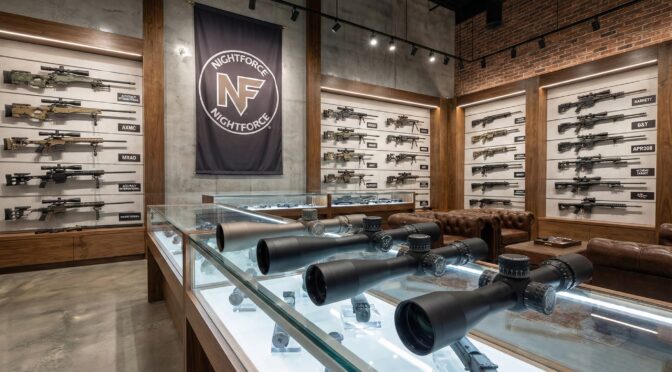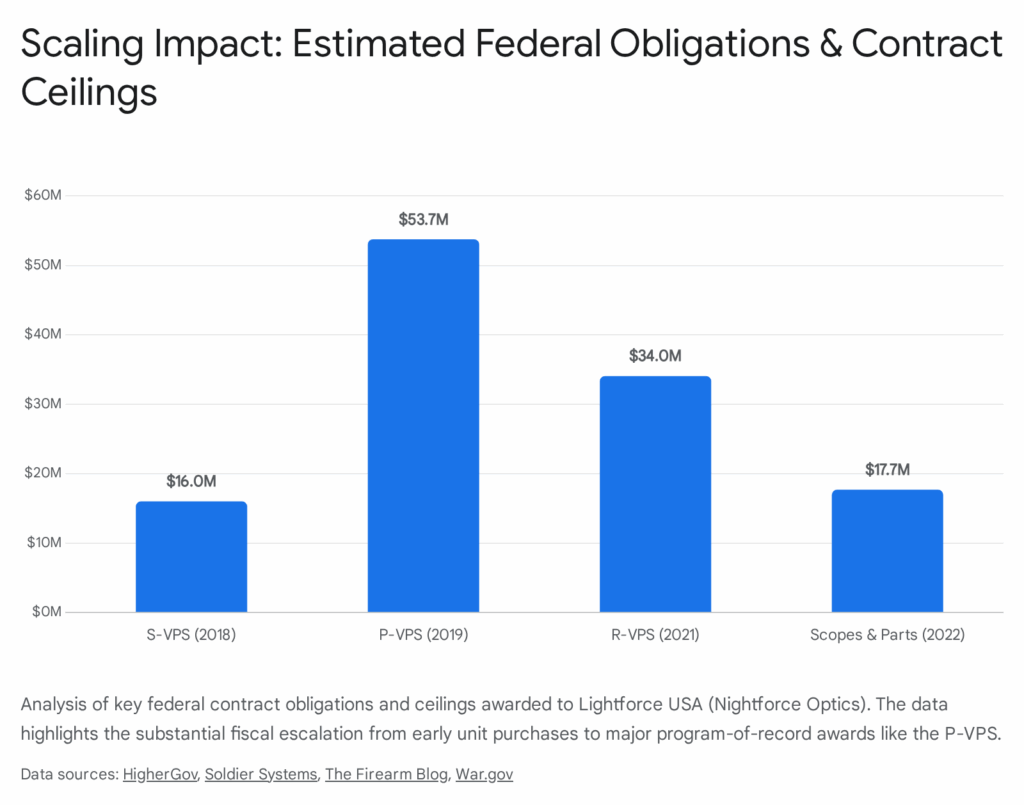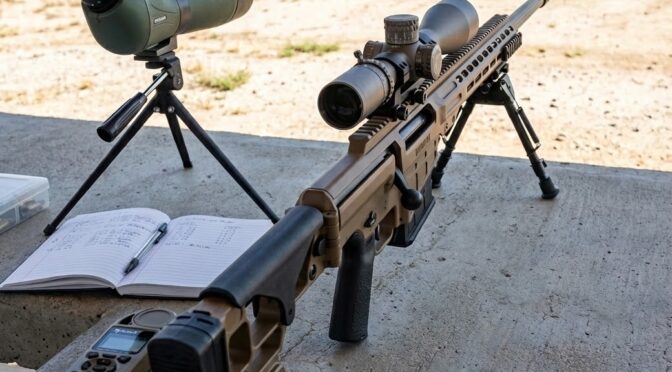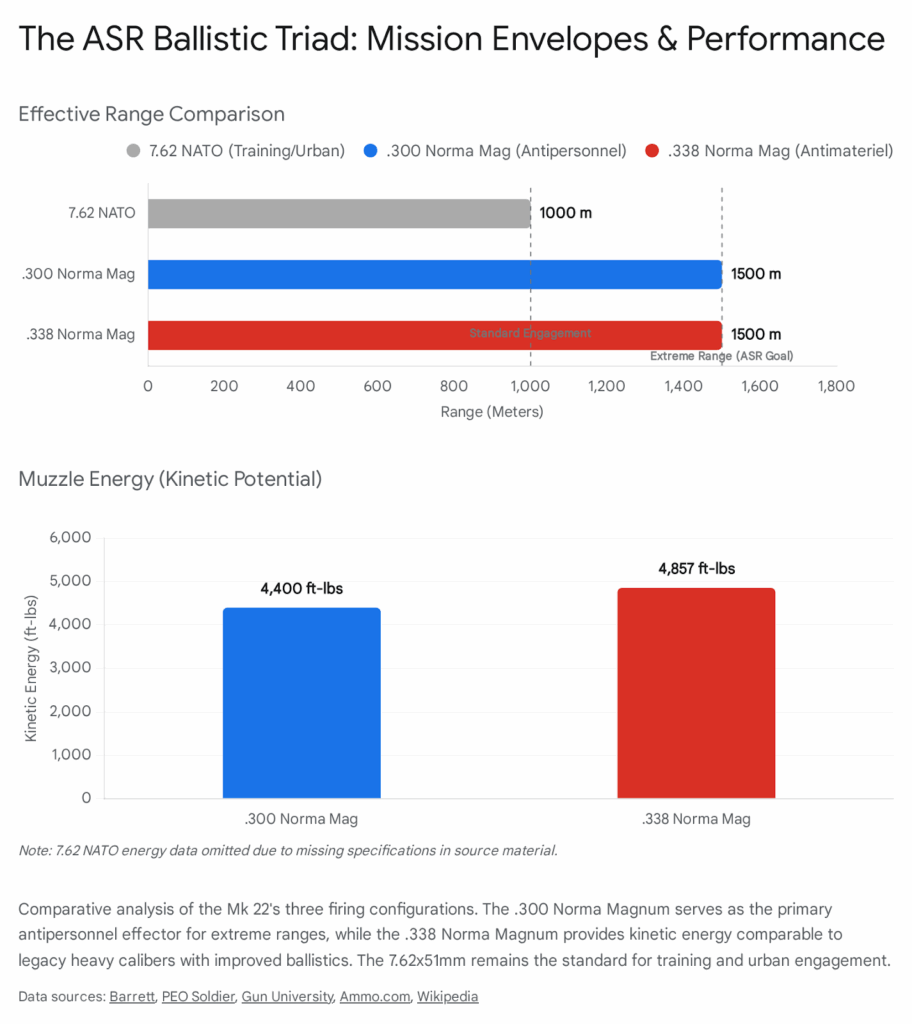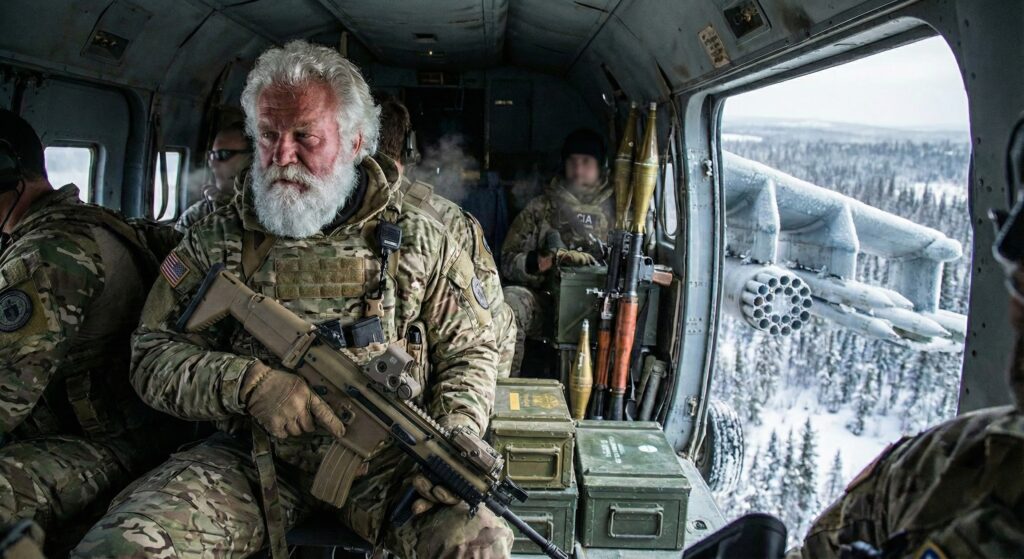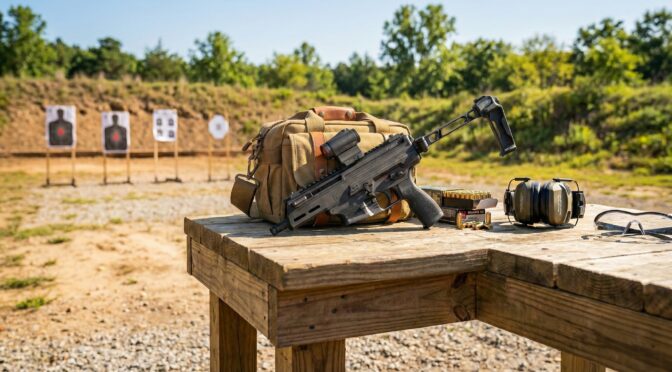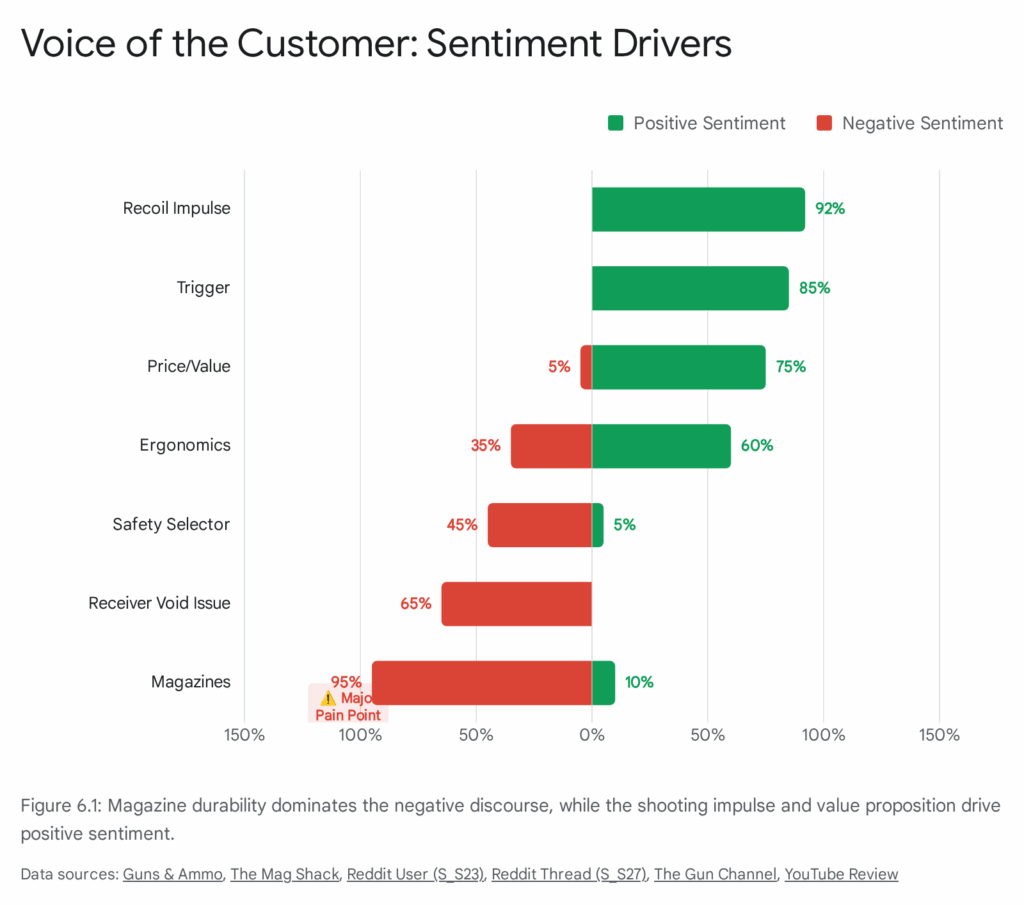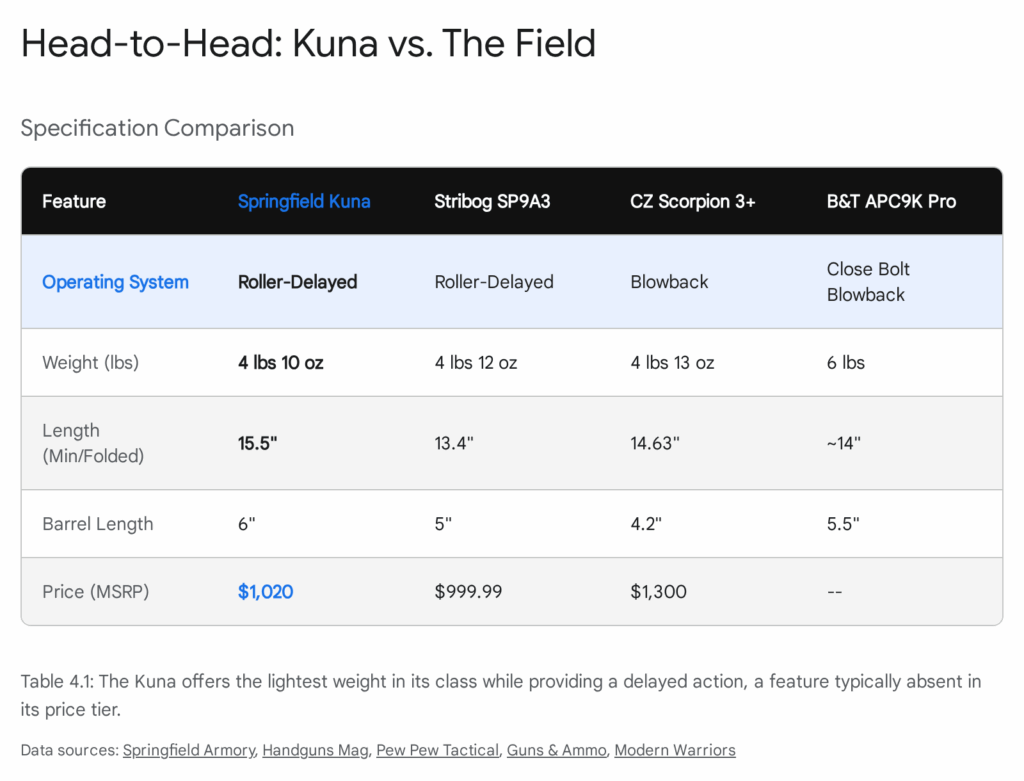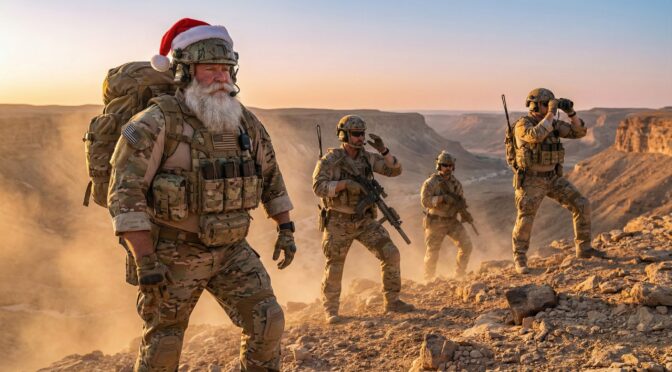A Deep-Dive Industry Report on the UAE’s Defense Conglomerate
The global defense landscape has witnessed a paradigm shift in the last decade, characterized by the transition of Gulf Cooperation Council (GCC) states from passive consumers of Western military hardware to active, sovereign manufacturers. At the forefront of this industrial metamorphosis is the EDGE Group, a United Arab Emirates (UAE) state-owned conglomerate established in November 2019. By consolidating over 25 disparate entities—including the legacy Emirates Defence Industries Company (EDIC), Emirates Advanced Investments Group (EAIG), and Tawazun Holding—EDGE has streamlined the UAE’s fragmented defense industrial base into a cohesive, export-oriented powerhouse. This report provides an exhaustive analysis of EDGE’s operations within the small arms and light weapons (SALW) sector, primarily executed through its anchor entity, CARACAL International, and its munitions arm, LAHAB Defence Systems.
Our analysis reveals that EDGE’s strategy in the small arms sector is defined by a “Buy-to-Build” methodology. Rather than engaging in the slow, iterative process of organic research and development (R&D) typical of nascent industries, EDGE accelerated its maturity by acquiring historic European manufacturers. The 2007 acquisition of Merkel Jagd- und Sportwaffen GmbH (and by extension, C.G. Haenel) provided the UAE with immediate access to centuries of German metallurgy, barrel forging expertise, and intellectual property. This technology transfer has been successfully integrated into CARACAL’s manufacturing hub in Abu Dhabi, allowing the production of battlefield-proven systems that compete directly with tier-one Western manufacturers like Heckler & Koch, SIG Sauer, and FN Herstal.
The product portfolio analyzed in this report covers the full spectrum of infantry requirements, from the polymer-framed “F” series pistols and the modular CMP9 submachine gun to the gas-piston operated CAR 816 assault rifle and anti-materiel sniper systems. The CAR 816, in particular, demonstrates the group’s technical ambition; designed by engineers formerly associated with the HK416 and SIG 516 programs, it features a short-stroke gas piston system capable of passing “over-the-beach” and bore obstruction tests, positioning it as a robust solution for modern special operations forces.
Crucially, the report identifies a pivot in EDGE’s international strategy from simple hardware sales to complex Original Equipment Manufacturer (OEM) partnerships and technology transfer agreements. Recent contracts in 2024 and 2025 with India (ICOMM), Indonesia (PT Pindad), and Malaysia (Ketech Asia) underscore a willingness to localize production to bypass import restrictions and secure long-term government procurement. This “diplomacy through defense” model is creating a web of interdependent industrial bases across the Global South.
In the United States, EDGE maintains a bifurcated market presence. While Caracal USA operates as a domestic manufacturer and importer for tactical systems to navigate 922(r) compliance and law enforcement procurement, the group relies on specialized third-party importers for its heritage and ammunition lines. T&G German Gun Imports manages the high-end Merkel hunting portfolio, while The American Marksman and various distributors handle the influx of Lahab military-grade ammunition into the commercial market.
However, the group’s ascent has not been without friction. The report details the significant legal and geopolitical challenges faced by EDGE’s German subsidiary, C.G. Haenel, specifically the patent litigation with Heckler & Koch regarding the MK556 assault rifle. The subsequent revocation of the German Bundeswehr contract highlights the protective legal moats surrounding established European defense incumbents and the risks inherent in aggressive market disruption. Despite these hurdles, EDGE continues to expand its capabilities, integrating smart optics, robotics, and advanced energetics, cementing its status not merely as a regional player, but as a disruptive global prime contractor.
1. Corporate Genesis and Strategic Context
1.1 The Geopolitical Impetus for Industrial Sovereignty
To understand the trajectory of the EDGE Group, one must first analyze the geopolitical environment that necessitated its creation. For decades, the UAE was one of the world’s largest importers of defense equipment, relying heavily on the United States, France, and the United Kingdom for its security architecture. However, shifting geopolitical alliances, export control restrictions (such as ITAR), and the desire to diversify the national economy away from hydrocarbons drove the Abu Dhabi leadership to pursue “strategic autonomy.”
The formation of the EDGE Group on November 5, 2019, was the culmination of this strategic pivot.1 It was not merely a corporate restructuring but a national security imperative. By consolidating the fragmented assets of the Emirates Defence Industries Company (EDIC), Emirates Advanced Investments Group (EAIG), and Tawazun Holding, the UAE created a unified entity capable of leveraging economies of scale. The mandate was clear: disrupt antiquated military procurement processes, foster agility, and develop sovereign capabilities that could withstand global supply chain shocks.2
1.2 Structure of the Conglomerate
EDGE is headquartered in Abu Dhabi and currently employs over 12,000 personnel across more than 25 subsidiaries.1 The group is organized into operational clusters designed to cover the entire spectrum of modern warfare. While the group has interests in cyber warfare (KATIM, ORYXLABS) and autonomous systems (ADASI), this report focuses exclusively on the Missiles & Weapons cluster, which houses the small arms and ammunition capabilities.3
The Missiles & Weapons cluster is the kinetic arm of EDGE. It integrates the entire value chain of lethality:
- CARACAL: The prime contractor for firearms.3
- LAHAB: The energetics and ammunition provider.4
- AL TARIQ / HALCON: Precision guidance and missile systems (adjacent to small arms but sharing industrial base resources).3
This clustering allows for vertical integration. For instance, a sniper system sold by EDGE can include the rifle (Caracal), the ammunition (Lahab), and potentially the optical/thermal integration (via other EDGE electronic warfare subsidiaries). This turnkey approach is a significant competitive advantage in international government tenders.
1.3 Leadership and Vision
The leadership profile of EDGE diverges from traditional defense primes, which are often run by career bureaucrats or retired generals.
- Faisal Al Bannai (Chairman): The founder, Al Bannai, entered the defense sector with a background in technology startups (Axiom Telecom) and cybersecurity (DarkMatter). His leadership style emphasizes “speed to market” and “disruption,” viewing the defense industry as stagnant and ripe for technological overhaul.1
- Hamad Al Marar (Managing Director & CEO): Appointed in early 2024, Al Marar brings operational rigor to the group, overseeing the execution of its massive export backlog, which exceeded $2.3 billion by the end of 2024.1
- Hamad Al Ameri (CEO of CARACAL): Al Ameri has been instrumental in the internationalization of the Caracal brand, overseeing the establishment of subsidiaries in the US and Germany and navigating the complex export control environments of these jurisdictions.6
2. CARACAL International: The Anchor Entity
2.1 Origins: The Bubits Collaboration (2002–2006)
The history of CARACAL predates EDGE by nearly two decades. In 2002, the UAE Armed Forces identified a need for a domestic pistol capability. Rather than reverse-engineering an existing design, they contracted Wilhelm Bubits, a renowned Austrian firearms designer known for his work on the Steyr M series.8
Bubits worked with UAE military experts to design a polymer-framed, striker-fired pistol that prioritized a low bore axis to mitigate recoil—a critical feature for rapid follow-up shots in combat scenarios. This collaboration culminated in the incorporation of Caracal International L.L.C. in Abu Dhabi in late 2006.8 The company formally launched at IDEX 2007, presenting the Caracal F pistol to the world.10 This marked the first time a GCC nation had successfully designed and mass-produced a modern firearm, signaling the region’s industrial arrival.
2.2 The “Buy-to-Build” Acquisition Strategy
While the pistol was an indigenous design, CARACAL recognized that building a full-spectrum small arms company required deep metallurgical expertise that did not exist in the UAE. To bridge this gap, CARACAL executed a strategic acquisition of Merkel Jagd- und Sportwaffen GmbH in July 2007.10
Merkel, based in Suhl, Germany, was founded in 1898 and represented the pinnacle of Thuringian gunsmithing.11 This acquisition was transformative:
- Industrial Base: It gave CARACAL ownership of cold hammer forging machines and barrel production lines in Germany, technology that is heavily export-controlled and difficult to procure independently.10
- Brand Legitimacy: Ownership of a heritage German brand provided immediate legitimacy in the skepticism-prone firearms market.
- Intellectual Property: It brought the C.G. Haenel brand (a dormant subsidiary of Merkel) under UAE control. CARACAL subsequently revived Haenel in 2008 to serve as its dedicated defense arm in Europe, distinct from Merkel’s hunting focus.12
2.3 Facilities and Manufacturing Standards
Today, CARACAL operates a massive industrial complex in the Tawazun Industrial Park, Abu Dhabi. The facility is characterized by high-precision CNC machining centers, automated quality control (QC) loops, and onsite proofing ranges.6 The manufacturing processes are certified to meet NATO (AC 225), CIP (Commission Internationale Permanente), and SAAMI standards, ensuring interoperability with Western military logistics.4
The facility is not merely an assembly plant; it performs raw material processing, heat treatment, surface finishing (anodizing/QPQ), and final assembly. This “sovereign” capability means the UAE can produce small arms even if cut off from global supply chains, fulfilling the primary mandate of the EDGE Group.
3. House Brands and Market Segmentation
EDGE manages its small arms portfolio through a multi-brand strategy, segmenting the market by end-user type (Tactical, Hunting, Luxury) and geography. This prevents brand dilution—keeping the tactical grit of Caracal separate from the aristocratic heritage of Merkel.
3.1 CARACAL (The Flagship)
- Identity: Modern, tactical, combat-proven.
- Target Market: Military, Law Enforcement, Defense Contractors.
- Key Products: CAR 816 Assault Rifle, Enhanced F Pistol, CSR Sniper Rifles.
- Strategic Role: The primary volume seller for government contracts and the face of UAE industrial prowess.3
3.2 Merkel Jagd- und Sportwaffen (The Heritage Brand)
- Identity: Traditional, artisanal, precision engineering.
- Target Market: High-net-worth hunters, collectors, European civilian market.
- Key Products: Helix Straight-Pull Rifle, K5 Single Shot, Drillings (96K), Side-by-Side Shotguns (40E/45E).13
- Strategic Role: Maintains the connection to Suhl’s gunsmithing history. Merkel produces the barrels for many group products, utilizing its specific expertise in cold forging steel.13
3.3 C.G. Haenel (The European Tactical Arm)
- Identity: Rugged, utilitarian German engineering.
- Target Market: European NATO forces, German Police, Special Operations.
- Key Products: MK556 (Assault Rifle), CR223 (Civilian Rifle), RS8/RS9 (Sniper Systems).
- Strategic Role: Haenel allows EDGE to bid on contracts that require “German” or “European” origin. It was the vehicle used to win (and briefly hold) the German Army rifle contract, challenging Heckler & Koch on its home turf.12
3.4 Liwa Arms (The Indigenous Hunting Brand)
- Identity: UAE heritage, Bedouin tradition meets modern manufacturing.
- Target Market: Regional Gulf hunters, international commercial market.
- Key Products: Chayeh Z20 (Bolt Action), Chayeh Z22 ‘Saktoon’ (.22LR variant popular in Gulf shooting sports).16
- Relationship: While functionally integrated into CARACAL’s distribution network, Liwa Arms appears to operate as a distinct Emirati entity partnering with EDGE. The 2024 MoU between CARACAL, Liwa Arms, and Remington Firearms suggests a strategy to push this unique “Arabian” brand into the massive North American hunting market via Remington’s distribution channels.17
3.5 LAHAB Defence Systems (The Energetics Arm)
- Identity: High-volume military energetics.
- Target Market: UAE Armed Forces, Export clients (US commercial, NATO).
- Key Products: Small arms ammunition (5.56mm, 7.62mm, 9mm,.50 BMG), aircraft bombs (Mk81-84), grenades, and artillery shells.4
- Strategic Role: Formerly Barij Munitions, LAHAB is the only ammunition manufacturer in the UAE. It ensures that the guns sold by Caracal have a steady supply of feed. Its integration into EDGE allows for “systems” sales (weapon + ammo packages).4
4. Technical Product Analysis and Portfolio
The following section provides a deep technical analysis of the key firearms produced by the EDGE Group, highlighting their design lineage, operating mechanisms, and competitive positioning.
4.1 Assault Rifles and Carbines
CAR 816 (“The Sultan”)
The CAR 816 is the crown jewel of the CARACAL rifle line. It is a 5.56x45mm NATO assault rifle that utilizes a short-stroke gas piston operating system.
- Design Lineage: The rifle was developed by a team led by Robert Hirt and Chris Sirois. Both engineers were instrumental in the development of the HK416 and the SIG 516.20 Consequently, the CAR 816 shares the architectural DNA of the HK416—specifically the use of a piston to keep the bolt carrier group (BCG) cool and clean, unlike the direct impingement system of the M4.
- Gas System: It features a 3-position adjustable gas valve (Normal, Adverse, Suppressed/Off). This adjustability is critical for special operations, allowing the operator to tune the rifle for the increased backpressure of a suppressor or to force the action to cycle in heavily fouled conditions.6
- Durability: Independent reports and company literature highlight that the CAR 816 is subjected to “over-the-beach” testing (firing immediately after submersion in water) and bore obstruction testing. The barrel extension features a proprietary extractor support pin designed to prevent catastrophic failure during high-pressure events.21
- Market Position: It competes directly with the HK416 A5, SIG MCX, and FN SCAR-L.
CAR 814
- System: Direct Impingement (DI).
- Analysis: This is a standard M4/AR-15 clone. By offering a DI gun, CARACAL provides a lighter, lower-cost option for regular infantry or law enforcement agencies that do not require the extreme durability of the piston-driven CAR 816. It serves as the “standard issue” baseline product.6
Haenel MK556 / CR223
- System: Short-Stroke Piston.
- Relationship to CAR 816: The MK556 and CAR 816 are technically siblings, sharing the same design lineage. The MK556 is the fully automatic military version produced in Germany, while the CR223 is the semi-automatic civilian version.
- The Bundeswehr Controversy: In 2020, the MK556 won the contract to replace the G36 rifle for the German Army. However, Heckler & Koch sued, alleging that the “over-the-beach” water drainage holes in the bolt carrier and the locking system infringed on HK patents. The German government subsequently revoked the contract and awarded it to the HK416 A8. This incident proved that while EDGE possesses the technology, the legal minefield of European defense IP is a significant barrier to entry.22
4.2 Pistols
Caracal F / Enhanced F / Gen II
- Caliber: 9x19mm NATO.
- Architecture: Polymer frame, striker-fired.
- Key Feature: The “Low Bore Axis.” The slide sits very low in the hand, reducing the lever arm of recoil and minimizing muzzle flip.
- Evolution: The original Model F faced a recall in 2013 due to potential drop-safety issues. The Enhanced F (2015) resolved these issues with a redesigned trigger safety and firing pin block.6 The Gen II introduces MIL-STD-1913 rails and optics readiness, bringing the platform to parity with the Glock 17 Gen 5 and Sig P320.24
2011
- Type: Double-stack 1911.
- Analysis: Showcased at ADIHEX, this represents a move into the high-end competition and tactical market (similar to Staccato). It indicates CARACAL is expanding beyond mass-issue military arms into niche, high-margin commercial segments.16
4.3 Submachine Guns
CMP9
- Caliber: 9x19mm.
- System: Advanced Blowback.
- Design: The CMP9 is modern and modular, with an upper receiver that is independent of the handguard. It is designed to replace aging MP5 fleets. Its charging handle is ambidextrous, and it accepts standard pistol magazines, simplifying logistics for police forces using Caracal pistols.6
4.4 Precision and Sniper Systems
CSR 338 / 308
- Caliber:.338 Lapua Magnum /.308 Winchester.
- System: Bolt Action.
- Design: These rifles feature fully adjustable aerospace-grade aluminum chassis systems, folding stocks, and monolithic top rails for inline night vision/thermal optics. The adoption of the CSR 338 by India’s CRPF validates its capability in harsh environments.8
CSR 50
- Caliber: 12.7x99mm (.50 BMG).
- Role: Anti-materiel. Designed to disable light vehicles, radar installations, and unexploded ordnance at ranges exceeding 1,800 meters.8
5. Ammunition and Energetics: LAHAB Defence Systems
While firearms garner the headlines, the ammunition sector is a critical component of EDGE’s sovereign capability model. LAHAB Defence Systems (formerly Barij Munitions) operates manufacturing lines capable of producing millions of rounds annually.
5.1 Product Range and Capabilities
- Small Caliber: LAHAB manufactures 5.56x45mm (M193 Ball, M855 Green Tip), 7.62x51mm, 9x19mm, and 12.7x99mm ammunition. The company utilizes components that meet US Mil-Spec and NATO standards.4
- Medium/Large Caliber: Production includes 40mm grenades (Low Velocity and High Velocity), 60mm/81mm/120mm mortar rounds, and 155mm artillery shells (ERFB HE BT).19
- Aircraft Munitions: LAHAB produces the Mk80 series (Mk81, Mk82, Mk83, Mk84) general-purpose bombs used by the UAE Air Force.19
5.2 X-Ray and Chemical Laboratories
Snippet 4 highlights that LAHAB operates dedicated chemical and X-ray laboratories. This is essential for Quality Assurance (QA) in energetics, allowing for the non-destructive testing of fuzes and the chemical stability analysis of propellants—a critical safety requirement for long-term ammunition storage in the high-heat environment of the Middle East.
6. OEM Work, Technology Transfer, and Global Partnerships
A defining characteristic of EDGE’s strategy is its willingness to engage in Original Equipment Manufacturing (OEM) and Technology Transfer (ToT). Unlike traditional Western exporters who often guard their IP jealously, EDGE uses IP transfer as a sweetener to win contracts in developing nations that mandate “local content.”
6.1 India: The ICOMM Partnership (Make in India)
In alignment with India’s “Make in India” initiative, CARACAL partnered with ICOMM Tele Ltd (a Megha Engineering subsidiary).
- The Deal: CARACAL provided the licensing and technology for ICOMM to manufacture firearms in India.
- Facility: The “ICOMM Caracal Small Arms Complex” was inaugurated in Hyderabad in April 2025.8
- Production: The facility is tasked with producing the CSR 338 sniper rifle for the Central Reserve Police Force (CRPF) and likely future orders for assault rifles.26
- Significance: This OEM arrangement allows CARACAL to capture a share of the massive Indian defense market that is closed to direct imports.
6.2 Indonesia: PT Pindad Joint Production
- Partner: PT Pindad (Persero).
- The Deal: Co-production of the CAR 816 assault rifle.
- Localization: The rifle is rebranded as the PC 816 V1 (Pindad Caracal). This allows the Indonesian military to purchase a “domestic” rifle that is technologically a Caracal product.28
- Scope: The deal includes ammunition supply from LAHAB.1
6.3 Malaysia: Ketech Asia
- Event: In February 2025, EDGE signed an MoU with Ketech Asia at NAVDEX.
- Objective: To establish local assembly and production lines for the CAR 816 in Malaysia, targeting the Royal Malaysian Armed Forces’ modernization requirements.28
6.4 United States: The Wilcox Collaboration
The OEM relationship with Wilcox Industries in the US works in the reverse direction compared to India/Indonesia.
- Direction: Wilcox Industries (Newington, NH) acts as the OEM manufacturer for Caracal USA.
- Rationale: To sell to US government entities and Law Enforcement agencies using federal funds, firearms generally need to be US-made (Buy American Act / Berry Amendment compliant).
- Activity: Wilcox manufactures the CAR 816 and CAR 814 receivers and assembles the weapons in New Hampshire. This partnership also birthed the “Fusion System,” where Wilcox’s laser/illuminator technology is integrated directly into the rifle’s handguard, creating a co-branded premium product.7
6.5 Remington Firearms Partnership
In late 2024/2025, CARACAL facilitated an MoU between Liwa Arms and Remington Firearms.
- Objective: For Remington to manufacture and distribute Liwa Arms’ Chayeh hunting rifles in the USA.17
- Strategic Insight: This leverages Remington’s ubiquity in the American sporting market to introduce an Emirati brand, bypassing the immense cost of building a new distribution network from scratch.
7. United States Market Operations and Importation Structure
The US market is the largest commercial firearms market in the world, and EDGE approaches it through a fragmented, brand-specific importation structure.
7.1 Caracal USA (Direct Subsidiary)
- Entity: Caracal USA (wholly owned subsidiary of Caracal International).
- HQ Location: Nampa, Idaho (moved from Boise).30
- Role: Importer of record and manufacturer.
- Products: They handle the Enhanced F Pistol (imported/assembled) and the CAR 814 A2 / CAR 816 A2 (manufactured in the US via Wilcox or their own facilities to meet demand).
- Leadership: Jeffrey Spalding (President & CEO).
- Strategy: Focuses on the tactical, law enforcement, and self-defense markets. They exhibit annually at SHOT Show (Booth 10334 in 2025).30
7.2 Merkel Imports (Third-Party Exclusive)
Merkel rifles are not imported by Caracal USA. Instead, EDGE relies on a specialized partner.
- Importer: T&G German Gun Imports LLC.
- Location: Mobile, Alabama.
- Role: Exclusive US importer for Merkel Jagd- und Sportwaffen.
- Operations: Founded by George Inge and Tobi Nisse, T&G handles the custom ordering process for high-end bespoke guns (Drillings) and stocks standard models like the Helix. This boutique approach suits the high-cost, low-volume nature of Merkel products.31
7.3 Haenel Imports (The Stalled B&T Connection)
- Importer: Brügger & Thomet (B&T) USA attempted to become the importer.
- Product: The Haenel CR223 was to be imported as the B&T 15 (marketed as a pistol to avoid 922r rifle restrictions).
- Status: The patent litigation with Heckler & Koch in Germany severely impacted this pipeline. Importation has been sporadic or stalled, with the product becoming a “unicorn” (rare item) on the US market. Snippets describe it as “unobtainium”.32
7.4 Ammunition Imports (LAHAB)
EDGE has aggressively entered the US ammo market, capitalizing on domestic shortages.
- Importer: The American Marksman (Omaha, Nebraska).34
- Distribution: Lahab 5.56mm (M193/M855) and 9mm FMJ are widely sold through online aggregators like True Shot Gun Club, Pro Armory, and Black Basin Outdoors.
- Branding: It is sold in distinctive steel ammo cans, explicitly marketed as “Mil-Spec” ammunition from the UAE.35
8. Comprehensive Timeline of Key Events
The following table outlines the chronological evolution of the EDGE Group’s small arms activities.
| Date | Event Description | Significance | Source |
| 1840 | C.G. Haenel founded in Suhl, Germany. | Origin of the group’s tactical heritage. | 12 |
| 1898 | Merkel Jagd- und Sportwaffen founded in Suhl, Germany. | Origin of the group’s sporting heritage. | 11 |
| 2002 | UAE Armed Forces begin pistol development with Wilhelm Bubits. | The start of indigenous UAE small arms R&D. | 8 |
| 2006 | Caracal International L.L.C. incorporated in Abu Dhabi. | Formal genesis of the company. | 8 |
| 2007 (Feb) | Caracal launches Model F Pistol at IDEX 2007. | First UAE-made pistol debuts globally. | 10 |
| 2007 (July) | Caracal acquires Merkel (and Haenel) in Germany. | Strategic acquisition of manufacturing tech/IP. | 10 |
| 2008 | C.G. Haenel re-established as a defense brand. | Revival of the tactical brand under UAE ownership. | 12 |
| 2013 | Recall of original Caracal F pistols. | Major QC setback leading to redesign (Enhanced F). | 36 |
| 2015 | Launch of Caracal Enhanced F and CAR 816 Rifle. | Maturation of the product line. | 20 |
| 2016 | Caracal partners with Wilcox Industries (USA). | Establishment of US domestic manufacturing. | 7 |
| 2019 (Nov 5) | EDGE Group established, absorbing Caracal. | Consolidation of UAE defense sector. | 1 |
| 2020 (Sept) | Haenel MK556 selected by German Army (Revoked Oct). | High-profile victory and legal defeat vs HK. | 15 |
| 2021 (Jan) | B&T USA announces import of Haenel CR223 (B&T 15). | Attempt to bring Haenel to US commercial market. | 33 |
| 2023 | EDGE acquires Milrem Robotics and stake in SIATT. | Expansion into autonomous systems/missiles. | 1 |
| 2024 (Early) | Hamad Al Marar appointed CEO of EDGE. | Leadership transition to scale operations. | 1 |
| 2025 (Feb) | MoU signed with Ketech Asia (Malaysia). | Expansion of Asian production footprint. | 28 |
| 2025 (Apr) | ICOMM Caracal Small Arms Complex opens in India. | Major OEM facility for “Make in India” contracts. | 8 |
| 2025 (Sept) | Contract awarded to supply CSR 338 to India’s CRPF. | First major delivery from Indian facility. | 26 |
| 2025 (Nov) | MoU with Remington Firearms and Liwa Arms. | Strategic entry into US hunting distribution. | 17 |
| 2025 (Nov) | Caracal/Lahab exhibit at Middle East Hunting Expo. | Launch of new commercial product lines (Gen II). | 24 |
9. Conclusion
The EDGE Group has fundamentally altered the defense industrial dynamics of the Middle East. By combining the financial capital of the UAE with the intellectual capital of Germany (Merkel/Haenel) and the strategic engineering talent of the US/Europe (Caracal design team), EDGE has created a “sovereign” small arms capability that is self-sufficient yet globally integrated.
The analysis demonstrates that EDGE is no longer a passive holding company but an active operator. It has moved beyond simple export sales to building a global industrial web through OEM partnerships in India and Southeast Asia. While challenges remain—most notably the patent litigation in Europe and the saturation of the US commercial market—the group’s diverse portfolio, ranging from Lahab’s artillery shells to Haenel’s precision rifles, positions it as a resilient and formidable competitor in the global defense sector for the coming decade.
If you find this post useful, please share the link on Facebook, with your friends, etc. Your support is much appreciated and if you have any feedback, please email me at in**@*********ps.com. Please note that for links to other websites, we are only paid if there is an affiliate program such as Avantlink, Impact, Amazon and eBay and only if you purchase something. If you’d like to directly contribute towards our continued reporting, please visit our funding page.
Sources Used
- Edge Group – Wikipedia, accessed December 5, 2025, https://en.wikipedia.org/wiki/Edge_Group
- UAE merges more than 25 defense industry firms into EDGE group, accessed December 5, 2025, https://thedefensepost.com/2019/11/06/uae-merge-defense-companies-edge/
- Our Entities – EDGE Group, accessed December 5, 2025, https://edgegroupuae.com/entities
- Medium And Large Caliber munitions Manufacturer | LAHAB DEFENCE SYSTEMS, accessed December 5, 2025, https://edgegroupuae.com/lahab-defence-systems
- UAE Transitions From Arms Importer to Competitor With the West …, accessed December 5, 2025, https://www.stimson.org/2025/uae-transitions-from-arms-importer-to-competitor-with-the-west/
- Largest Small Arms Manufacturers & Suppliers | CARACAL – EDGE Group, accessed December 5, 2025, https://edgegroupuae.com/caracal
- Caracal Commits to US Market With Wilcox Partnership | Soldier Systems Daily, accessed December 5, 2025, https://soldiersystems.net/2016/01/18/caracal-commits-to-us-market-with-wilcox-partnership/
- Caracal International – Wikipedia, accessed December 5, 2025, https://en.wikipedia.org/wiki/Caracal_International
- Caracal pistol – Wikipedia, accessed December 5, 2025, https://en.wikipedia.org/wiki/Caracal_pistol
- Caracal Int. acquires Merkel for hunting, accessed December 5, 2025, https://www.wam.ae/en/article/hsyinqf3-caracal-int-acquires-merkel-for-hunting
- Merkel (firearms manufacturer) – Wikipedia, accessed December 5, 2025, https://en.wikipedia.org/wiki/Merkel_(firearms_manufacturer)
- C.G. Haenel – Wikipedia, accessed December 5, 2025, https://en.wikipedia.org/wiki/C.G._Haenel
- Home | Merkel, accessed December 5, 2025, https://www.merkel-die-jagd.de/en/
- Importers and Dealers – Merkel Jagd, accessed December 5, 2025, https://www.merkel-die-jagd.de/en/service/importers-and-dealers/
- Germany taps UAE-owned Haenel for new assault rifle contract – AP News, accessed December 5, 2025, https://apnews.com/general-news-c22bbb432932454d03d45fb47f9b3361
- CARACAL Debut Advanced Line of Commercial Pistols and Rifles at Inaugural AAIHEX, accessed December 5, 2025, https://edgegroupuae.com/news/caracal-debut-advanced-line-commercial-pistols-and-rifles-inaugural-aaihex
- CARACAL explores collaboration with Liwa Arms, Remington Firearms, accessed December 5, 2025, https://www.wam.ae/en/article/b518p8r-caracal-explores-collaboration-with-liwa-arms
- EDGE Entity CARACAL Explores Collaboration with Liwa Arms and Remington Firearms, accessed December 5, 2025, https://caracal.ae/news/edge-entity-caracal-explores-collaboration-liwa-arms-and-remington-firearms
- lahab defence systems – EDGE Group, accessed December 5, 2025, https://mediacenter-webfiles.edgegroup.ae/s3fs-public/2023-05/lahab-defence-systems.pdf
- CAR 816 | Gun Wiki – Fandom, accessed December 5, 2025, https://guns.fandom.com/wiki/CAR_816
- Caracal CAR816 A2 SBR – On Target Magazine, accessed December 5, 2025, https://www.ontargetmagazine.com/2023/11/caracal-car816-a2-sbr/
- Assault Rifles for the Bundeswehr – C.G. Haenel Continues to Fight for the Tender – Euro-sd, accessed December 5, 2025, https://euro-sd.com/2021/08/articles/armament/23759/assault-rifles-for-the-bundeswehr-c-g-haenel-continues-to-fight-for-the-tender/
- Haenel MK 556 – Wikipedia, accessed December 5, 2025, https://en.wikipedia.org/wiki/Haenel_MK_556
- EDGE Entity CARACAL to Showcase High-Performance Commercial Firearms at Middle East Hunting Expo, accessed December 5, 2025, https://mid-east.info/edge-entity-caracal-to-showcase-high-performance-commercial-firearms-at-middle-east-hunting-expo/
- Review: Caracal CMP9K | An Official Journal Of The NRA – Shooting Illustrated, accessed December 5, 2025, https://www.shootingillustrated.com/content/review-caracal-cmp9k/
- Small Arms Manufacturers | Pistol, Sniper Rifle and Weapon Manufacturures | CARACAL, accessed December 5, 2025, https://caracal.ae/
- Caracal International | Gun Wiki – Fandom, accessed December 5, 2025, https://guns.fandom.com/wiki/Caracal_International
- CAR 816 – Wikipedia, accessed December 5, 2025, https://en.wikipedia.org/wiki/CAR_816
- Caracal and Wilcox Debut First Collaborative Product, accessed December 5, 2025, https://caracalusa.com/caracal-and-wilcox-debut-first-collaborative-product/
- Caracal USA® to Exhibit at the 2025 SHOT Show® in Las Vegas – Hunting Life, accessed December 5, 2025, https://huntinglife.com/caracal-usa-to-exhibit-at-the-2025-shot-show-in-las-vegas/
- Merkel Has New Importer – Shooting Sportsman Magazine, accessed December 5, 2025, https://shootingsportsman.com/merkel-has-new-importer/
- Unobtainium obtained (Cr2233/BT15) : r/BT_APC – Reddit, accessed December 5, 2025, https://www.reddit.com/r/BT_APC/comments/1czyone/unobtainium_obtained_cr2233bt15/
- A new German Army rifle is coming to the U.S. market – We Are The Mighty, accessed December 5, 2025, https://www.wearethemighty.com/mighty-tactical/a-new-german-army-rifle-is-coming-to-the-u-s-market/
- Lahab 9mm 115 gr FMJ – 50 ct. – American Marksman, LLC, accessed December 5, 2025, https://www.theamericanmarksman.com/lahab-9mm-115-gr-fmj-50-ct.html
- Lahab – 5.56x45mm – 62 Grain – FMJ – Ammo Can, accessed December 5, 2025, https://trueshotammo.com/ammunition/rifle-ammo/5-56x45mm/lahab/lahab-5-56x45mm-62-grain-fmj/
- Limited Edition Caracal Enhanced F Pistol Nearly Here – The Firearm Blog, accessed December 5, 2025, https://www.thefirearmblog.com/blog/2017/06/22/limited-edition-caracal-f-enhanced-nearly/

